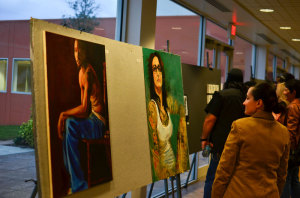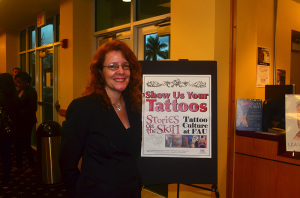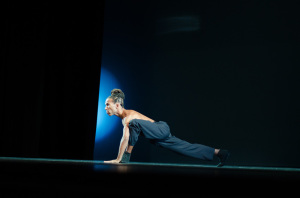
Stories on the Skin: Tattoo Culture at FAU premiered to an audience of about 150 people, consisting of students, professors, and other inquiring minds. The documentary, a collaboration between the Jaffe Center for Book Arts and Dr. Karen Leader of the Department of Visual Arts and Art History, shared the stories of various tattooed students, as well as the stories and reasons behind their ink.
“It’s kind of fun to have someone be interested in hearing the detailed back stories about why you got your tattoos,” said Sarah Jenkins, a graduate student in the women’s studies department. She is one of the students featured in the documentary.
“It was nice to honor the people I got my tattoos for, by showing them in the movie,” said Jenkins. According to Jenkins, who has 14 tattoos, her most admired one is located on her back between her shoulder blades. In the documentary, she said that the bright and colorful tattoo is a replica of a painting by her late friend.
The making of Stories on the Skin began in 2009 when the then-new professor, Dr. Karen Leader, met Arthur Jaffe, who is the founder of the Jaffe Center for Book Arts.
“After our very first lunch, we knew we were going to do this,” said Leader.

Friday’s premiere consisted of three parts: an exhibition, performances, and finally, the actual documentary. The exhibition entailed photographs of tattooed FAU students taken by visual artist Z. McCarthy Koppisch. Afterwards, the audience filed into the auditorium, where Leader welcomed them.
“When we see someone with a tattoo in the 21st century, we cannot assume we know anything about them,” said Dr. Karen Leader.
She then introduced six performers and two short films.
The first film featured Z. McCarthy Koppisch talking about her experience photographing tattoos around FAU’s campus. She is the designer of the documentary’s logo and even had it tattooed on her ankle by Ink and Pistons tattoo artist Lea Vendetta.
“I’d rather spend my day in a tattoo shop than a nail salon,” said Koppisch.
One of the more interesting performers was Stephen Casellas, who was also featured in the documentary. The music major has a tattoo of musical notes from the song “Aria pour Saxophone Alto et Piano,” a composition written by French composer and conductor Eugene Bozza, on his back. In 2010, Casellas was preparing to perform a song on his saxophone for a final exam, also known as a jury piece. While choosing a song, Casellas and his teacher agreed upon “Aria pour Saxophone Alto et Piano,” as it portrayed the feelings he had after losing his grandmother the previous semester. He went on to perform it with thoughts of her in mind. “I used my grandmother’s life as inspiration for the performance,” said Casellas.

After a brief intermission, the audience watched the 40-minute documentary. Students shared the memories behind each tattoo they had. Many were reminders of family members, painful experiences, and for one student, a reflection on an abusive relationship. The documentary also tackled the negative stigma faced by those with tattoos.
At its conclusion, Stories on the Skin received three rounds of applause.
“I really liked it and I thought it was interesting,” said sophomore Michelle Ferrand, a communications major. “And to see people you’ve seen around campus once or twice on the screen talking about their tattoos was cool.”











